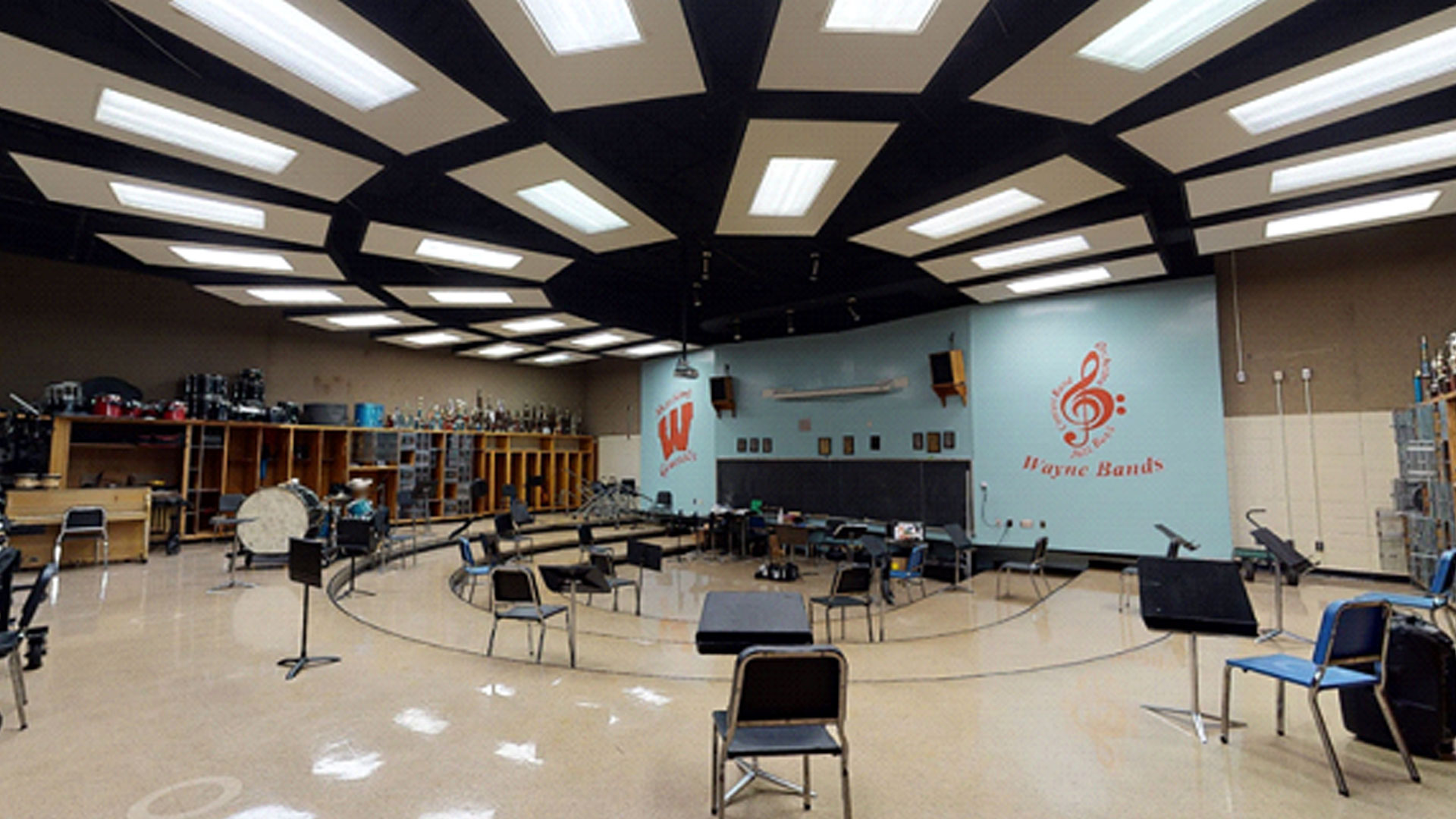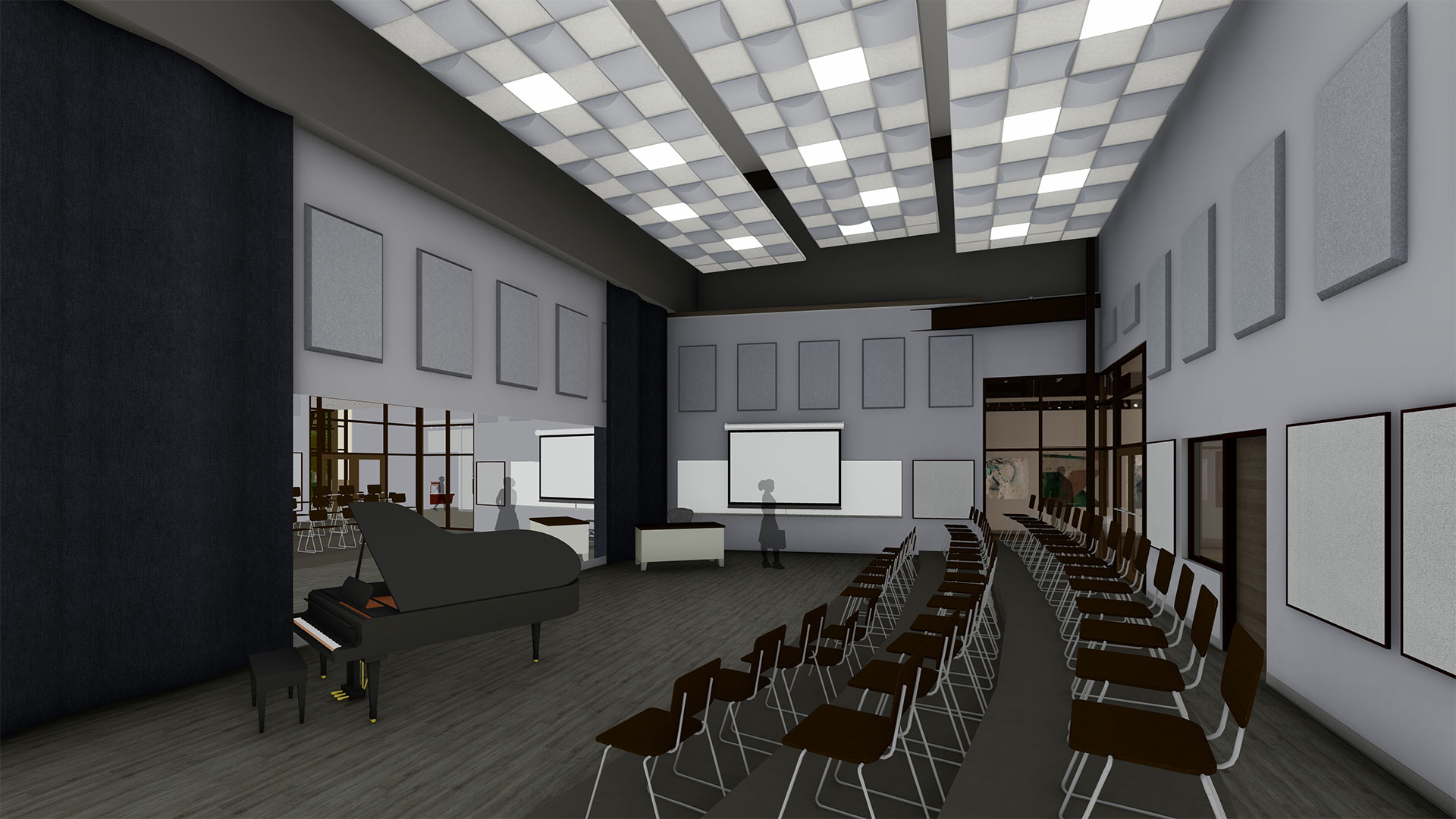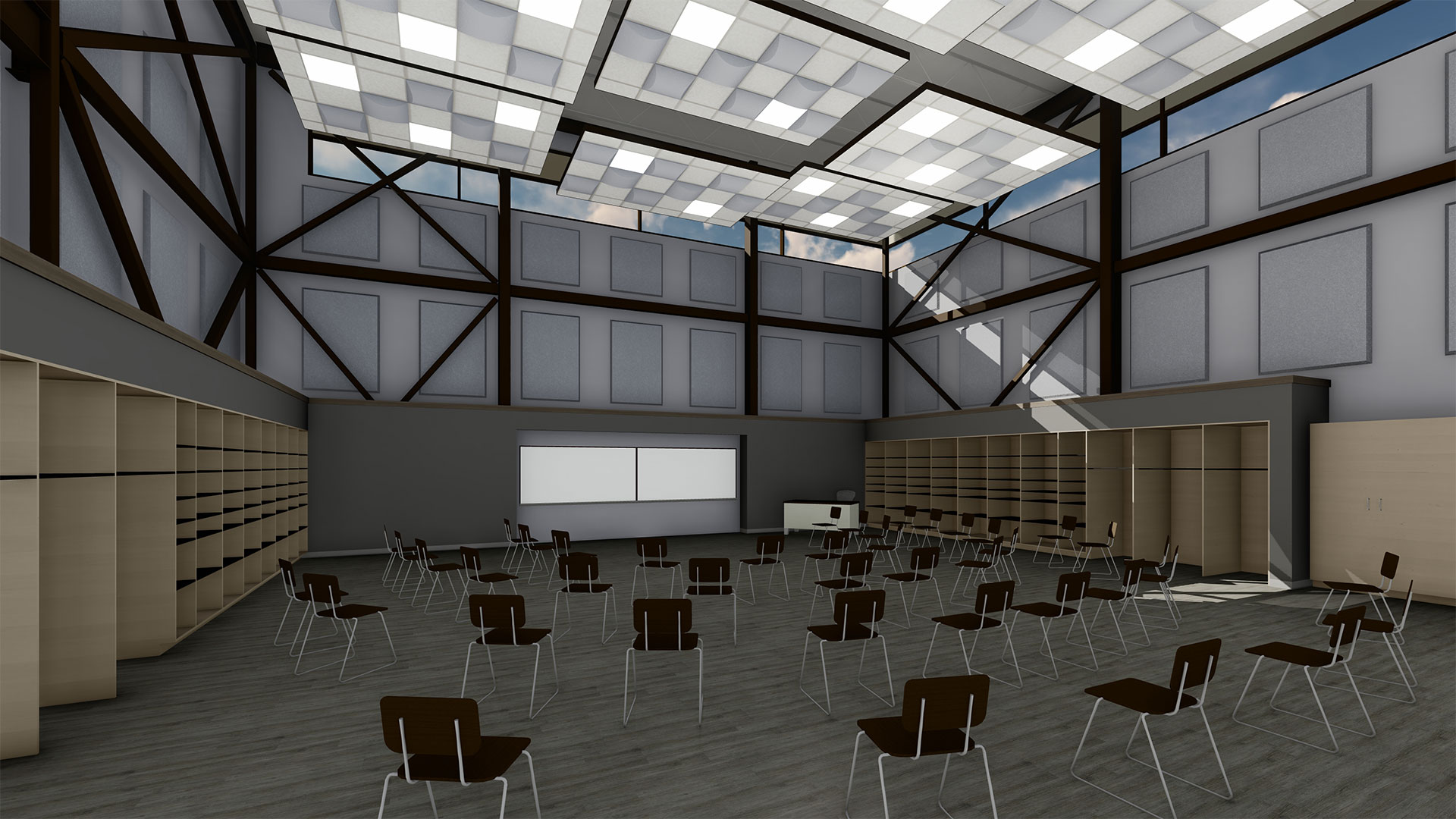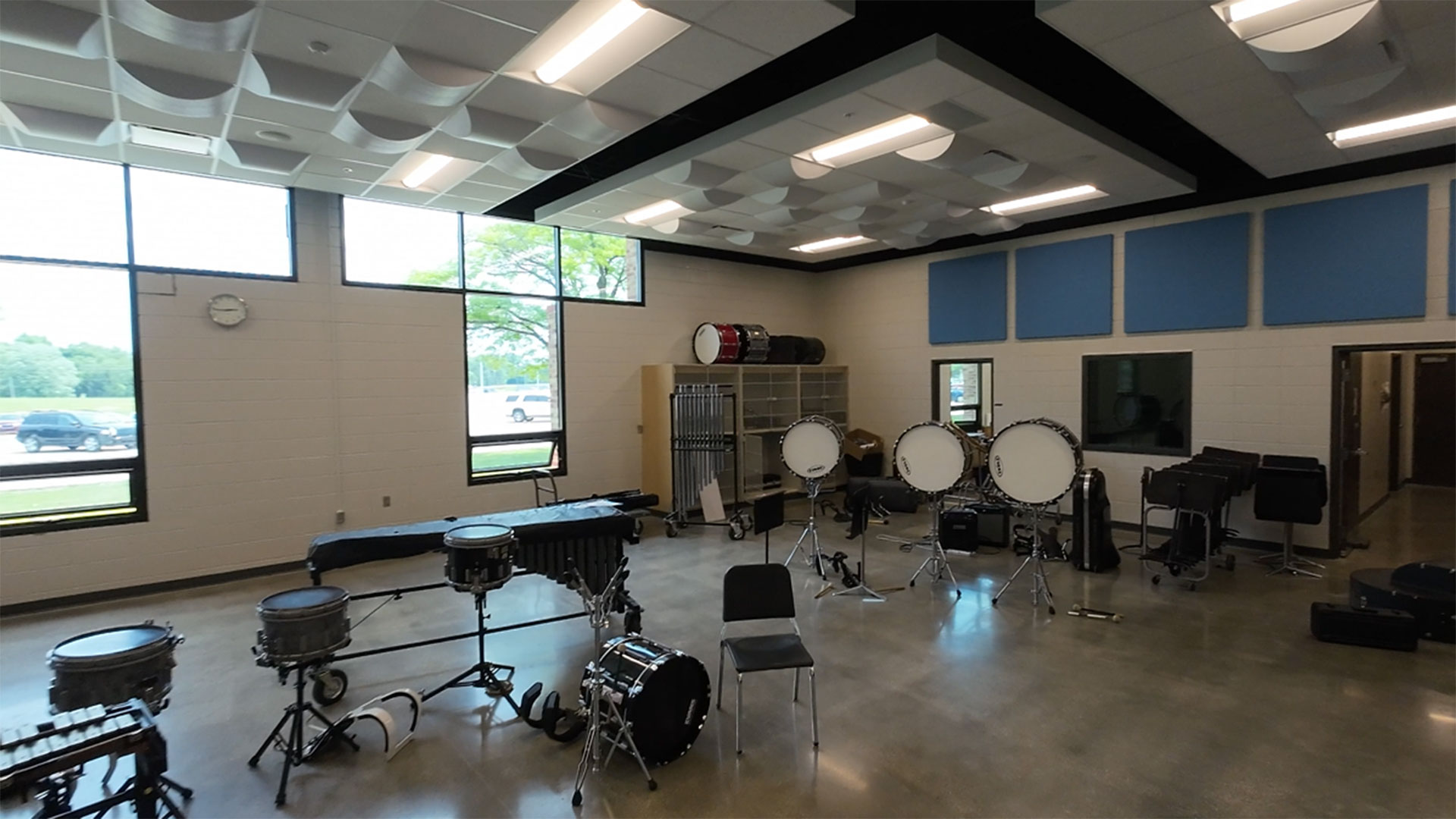Designing the Perfect Band Classroom: With or Without Risers?
By Molly Schultz, RA
September 5, 2024Post Tagged in
Creating an effective learning environment for band or choral students is crucial for music educators and school administrators. Classroom design not only impacts the daily operations but also influences how students interact with the music and each other.Two prevalent setups for music classrooms are with risers and without. Historically, risers have been the go-to choice, but many schools are now considering flat, floor-only arrangements. |

|

 |
Why Risers Have Been PopularEasy Setup and RoutineRisers provide a predictable structure for both teachers and students. “Set up is easy; it’s all done for you. It gives the kids a set way to do things, and students like routine,” says Kenneth Woods, band director at Wayne High School. Enhanced Sound ClarityThe different heights of risers can improve sound distribution, making it easier to hear individual parts and balance the ensemble. “It helps with cleaning parts in the music, and it helps the students hear the other members of the ensemble,” said Woods. “With the different instruments at different heights, you can hear things better or at least differently.” Improved SightlinesRisers ensure that students at the back have a clear view of the conductor, and vice versa, facilitating better communication and instruction. |


